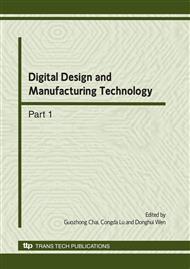p.145
p.150
p.155
p.160
p.165
p.170
p.175
p.179
p.184
Muscle Force and Joint Torque Prediction Model for Intelligent Human-Assisted Product Design
Abstract:
The muscle force and joint torque prediction model for intelligent human-assisted product design based on surface electromyography (EMG) was described. Muscle force and joint torque are the most important motion information in the intelligent assistant product design, and they can help designers to consider functional capabilities and limitations of different users when designing products. At first, thinking of the characteristics of daily tasks, surface EMG was adopted as the signal source. Secondly, the architecture of the prediction model based on the muscle physiological model and the musculoskeletal geometry model was proposed. According to the relationships of the “force-length” and “force-velocity”, the muscle force and joint torque could be calculated while the muscle active level was taken as one parameter. Finally, the experimental results of an intelligent stand-up assistant chair confirmed the effectiveness of the prediction model.
Info:
Periodical:
Pages:
165-169
Citation:
Online since:
March 2010
Authors:
Keywords:
Price:
Сopyright:
© 2010 Trans Tech Publications Ltd. All Rights Reserved
Share:
Citation:


